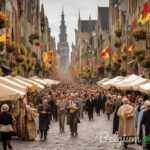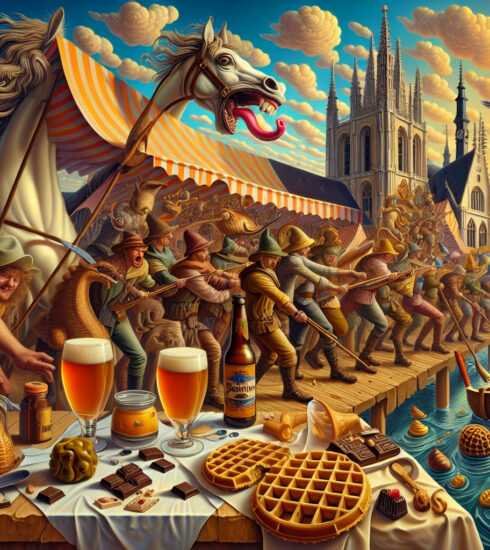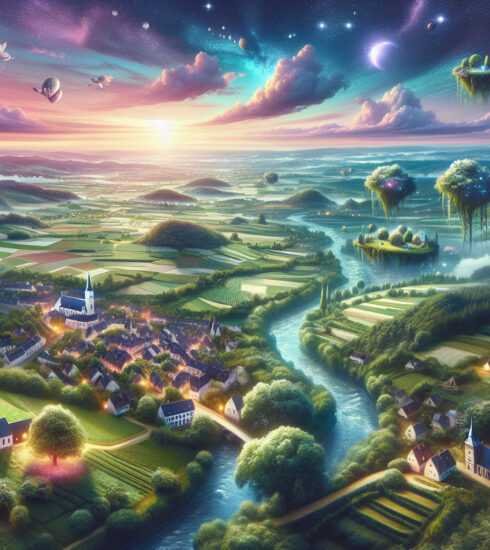Exploring Belgian Surrealism Chronicles: Hidden Voices of Whimsical Reflections
Introduction to Belgium’s Surrealist Scene
Belgium, a nation often overshadowed by its larger European neighbors, has been a silent yet powerful contributor to the art world. Among its most intriguing offerings is the surrealism movement, a testament to the country’s profound cultural depth. of Belgium, highlighting forgotten artists who painted tales not often told.
The Origins of Surrealism in Belgium
Born in the chaos of the early 20th century, surrealism seeks to transcend reality through unconventional imagery, often bordering on the whimsical and bizarre. While names like René Magritte command international attention, Belgium housed numerous artists equally compelling whose work has remained in the shadows.
The seeds of surrealism in Belgium were sown amid the devastation of World War I, a fertile period for avant-garde movements in Europe. The Belgian artists, drawing inspiration from the captivating surreal stories, began crafting their peculiar dreamscapes, fueled by influences ranging from Dadaism to the dramatic landscape of the post-war era.
Key Figures in Belgium’s Surrealist Movement

While René Magritte is undoubtedly a towering figure, Belgium’s surrealist roster boasts other remarkable artists who forged unique paths. Among them was E. L. T. Mesens, whose contributions not only as an artist but also as a curator and art dealer were instrumental in the advancement of the surrealist movement.
- Paul Nougé: Often dubbed the “Belgian André Breton,” he was pivotal in cultivating a surrealist group in Brussels that went by the name of Surréalisme en Belgique.
- Marcel Mariën: A critical thinker and writer, Mariën balanced his creative output between provocative photography and captivating novels that reflected surrealist thought.
Mesens, Nougé, and Mariën each integrated elements of societal critique, humor, and philosophical exploration into their work, thus helping Belgium carve its niche in the broader surrealist community.
Significant Impact and Artifacts
Belgium’s surrealist artists left behind a trail of works that testify to the depth and complexity of the movement. These include visually stunning and thought-provoking paintings, collages, and installations that continue to captivate both scholars and the general public.
The surrealist legacy in Belgium is preserved in various vital archives and museum collections, notably in Musee Magritte in Brussels, which hosts the world’s largest collection of Magritte’s work.

Forgotten Voices: Artists Shadowed by Time
Despite the pivotal role these artists played, many have remained on the periphery of mainstream art history. Camille Goemans is one such artist, whose poetic and artistic ventures reflected the distorted realism that surrealism championed. His works, though lesser-known, bear the hallmark of profound artistry.
The shedding light on these artists isn’t just about acknowledging past contributions. Understanding their histories and legacies adds a broader perspective on the cultural tapestry that surrealism in Belgium represented. It encourages artistic appreciation beyond familiar names, fostering a more inclusive view of art history.
Revisiting Surrealism: Exhibitions and Academic Explorations
The revival of interest in Belgium’s surrealist tradition has been made possible through a series of focused exhibitions and academic research. These platforms not only rejuvenate contemporary interest but also contextualize surrealism within today’s chaotic world.
- Instructive Exhibits: Major exhibitions such as the “Surrealist Dialogue” at the Royal Museums of Fine Arts of Belgium use interactive displays to engage visitors.
- Surrealist Studies: A growth in the scholarly interest has been marked by journals documenting the cultural significance of Belgian surrealism.

Such endeavors have ensured these once forgotten surrealist voices no longer remain unnoticed in the annals of art history.
Global Influence of Belgian Surrealism
Belgian surrealists’ narratives moved beyond continental Europe, influencing a wave of international surrealists and later avant-garde movements. The unique blend of introspective absurdity and societal commentary found its way into literature, film, as well as visual arts.
This cross-pollination of ideas underscores the universal relevance of Belgium’s surrealist narratives. A continued exploration into this area remains integral not only for artists and critics but for the global artistic community at large, reminding us of the power of art to bridge cultures.
Conclusion: The Resonance of Forgotten Voices
Belgium’s forgotten surrealist voices, far from being mere footnotes, echo a time where surreal visions sought to challenge reality and provoke thought. Embracing their contributions furnishes a richer understanding of the surrealist movement and renews an appreciation for its enduring influence.
To further dive into the nuances of Belgian surrealism and explore additional rich narratives of this art movement, readers are encouraged to visit our detailed analysis at this link and unravel the captivating stories interwoven with the nation’s cultural heritage.






